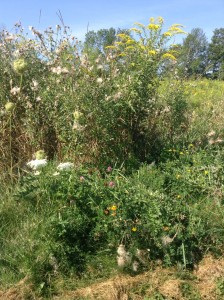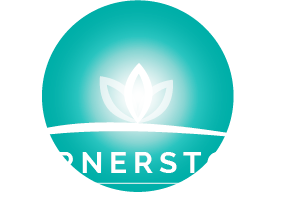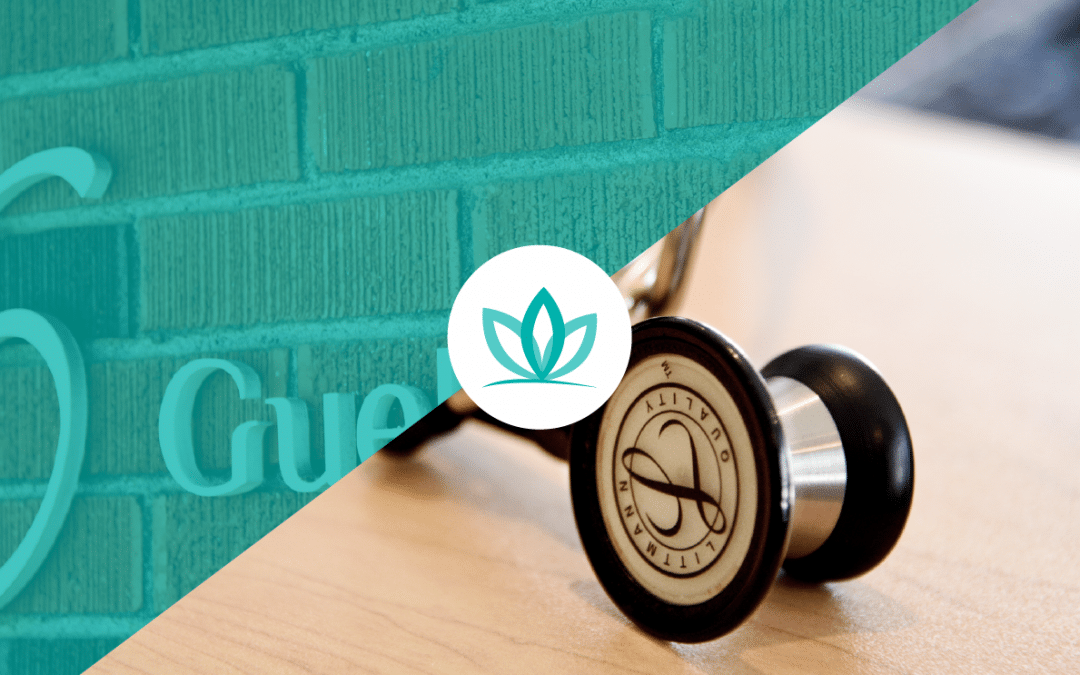This morning, while enjoying a quiet walk with my dog, I noticed a new weed in town. About 18 inches tall, light green with a spikey head, RAGWEED was the predominant flora at our local park. This rather innocuous looking plant wreaks havoc on millions of innocent people. Children and adults alike spend the last glorious weeks of summer and the beginning of the school year suffering from allergy symptoms that range from a mild runny nose to severe asthma attacks. In addition to ragweed, many have allergies to its blooming companions (shown below): goldenrod, clover, burdock, Queen Anne’s lace and dock.

Many adults with life-long allergies rely on over-the-counter anti-histamines to manage their symptoms. Chronic use of these drugs can lead to tolerance and ineffectiveness – as many of you already know. Many of these medications have children’s versions that also have the unpleasant side effects like dry mouth and extreme drowsiness (not helpful on the first day of school). Many with severe seasonal allergies turn to allergy “shots”, which can be effective, but are generally expensive and require a considerable time commitment (attending a clinic weekly for months every year).
So what is an allergy sufferer to do? Every year I invariably read a letter to the editor demanding that municipal governments spray or cut down these offending weeds so that we can all enjoy the outdoors comfortably. I suppose this approach may have some limited effectiveness – at least until a windy day when pollen becomes airborne. But, it can also have some unintended negative consequences – likely almost wiping out a species of butterfly as was the case with milkweed. This approach ultimately doesn’t deal with the root cause which is your deranged immune system and its overactive histamine response! To really stop suffering from seasonal allergies, you have to look inward and deal with this response in a logical and supportive way. There are many effective ways to manage your fall allergy symptoms WITHOUT the use of prescription drugs and even some tricks to eliminate them all together.
Really.
Read on and stop suffering!
Lowering you histamine load. Your reaction to ragweed pollen causes a release of a chemical called histamine from your cells (ergo the drug class “anti-histamine”). Histamine causes a local inflammatory response that causes a lot of mucous to be discharged from the membranes in your nose, eyes, ears and throat. These same tissues often become red and swollen. What is important to remember is that ragweed is not the only reason you are having a histamine overload. It’s really just the icing on the cake. Many other things in your life are contributing to this histamine problem, and some of them ARE under your control – unlike the ragweed population at your local park. For example, food. Try eliminating the top allergens from your diet and see how quickly your symptoms subside. These foods include cow dairy, refined sugar, wheat, soy and corn.
Love your Liver. This incredible organ is an important filter that plays a big role in allergy. Years of accumulation of toxic metabolites from your diet (caffeine, alcohol, prescription drugs) and the logjam of antibody-antigen complexes (an immune particle attached to the offending allergen) in your liver, render this organ less effective. Eliminating food and environmental toxins while doing a “cleanse” or “detox” with herbs and nutrients designed to clean out this organ, can dramatically reduce allergy symptoms. Be sure to get some sound advice from a health care provider so that your cleanse is safe and effective.
Enzymes to the rescue. Two different enzymes found in papaya and pineapple, just happen to be extremely helpful for allergy sufferers. Found in health food stores and good pharmacies, “bromelain” and “papain” help reduce allergy symptoms by breaking down those nasty little antibody-antigen complexes. These complexes are what trigger your cells to release histamine, so reducing the number of them always helps reduce symptoms. Bromelain and papain are enzymes found in fruit, so their safety profile is excellent. They are naturally anti-inflammatory and can reduce joint and muscle pain. Taken with food, they act as a digestive enzyme – helping your body break down food so the nutrients are more easily absorbed. Taken AWAY from food, they effectively help manage seasonal allergy symptoms.
The power of brightly coloured fruits and vegetables. Bioflavanoids are considered a part of the vitamin C family and are found in brightly coloured fruits (such as blueberries) and vegetables (peppers). Bioflavanoids are extremely good for you as they act as super-antioxidants and thereby play a role in preventing cancer and in vascular health, preventing atherosclerosis. Interestingly, they are also potently anti-histamine. The bioflavanoid that is commonly used for allergies is “quercitin”. Often found in combination with vitamin C, quercitin stabilizes mast cells (the white blood cell that releases histamine), quickly and effectively reducing allergy symptoms.
Recognizing that seasonal allergies are an expression of a tired liver and a dysregulated immune system will help you manage change your approach and treat them in a non-pharmaceutical, permanent way. With a little work on your liver early in the year (preferably spring) and swapping your anti-histamine for enzymes and bioflavonoids will show you there is a solution to seasonal allergies.

